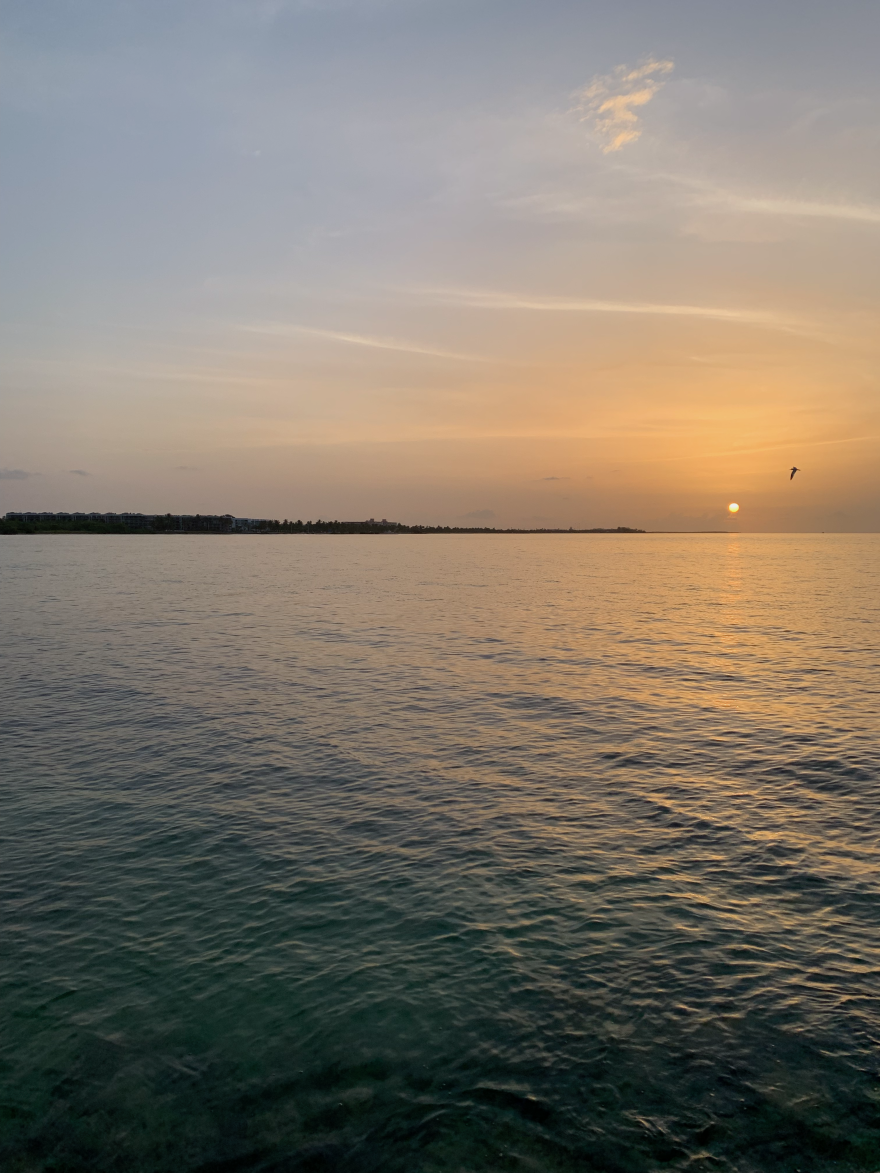|
Good Morning Kimberly!
Discover how morning light prepares you for restful nights and renewed energy.
What Wakes Me Up

I know I might be crazy, but when I don’t have to get up for my PT job or when I’m on vacation, I am compelled to get up and watch the sunrise! My favorite spot is at the beach where I can see it rise unobstructed. Most special of all is the AIDS Memorial Pier in Key West. People gather there—some with Bibles doing devotions, some exercising, and others just standing quietly, listening to the water lap against the pier. There’s something sacred about the moment the sun breaks the horizon—the stillness, the sound, and the fact that you can look right at it.
Light, Darkness & Your Body’s Clock
Our bodies are uniquely designed to run on rhythm— most specifically, the rhythm of light and dark. Early morning sun exposure is like a signal that tells your body, “It’s time to wake up and get moving!” This same signal helps set the tone for winding down when night falls, preparing your body to rest and recover.
Every organ, hormone, and even each of your cells has its own “clock.” Together, these clocks form what’s called the circadian rhythm—the alignment of your body’s internal timing with the 24-hour cycle of day and night.
When that rhythm is disrupted, it acts like stress on the body and can actually increase inflammation. Enter Daylight Saving Time! That one-hour shift might seem small, but studies show it can take up to a week for your body to fully adjust. In that time, people often experience reduced alertness, impaired judgment, and even higher risks of accidents. Health risks also spike—heart attacks, digestive issues, immune problems, anxiety, and depression can all rise around the time change.
Now think of how this affects night-shift workers, rotating schedules, and natural “night owls”—their clocks are constantly challenged!
Resetting Your Clock
Here are a few ways to minimize the effects of time changes and help your body sync with natural rhythms:
-
Morning Light: Get bright sunlight exposure within the first hour of waking (especially helpful right after the time change).
-
Evening Light: Choose warm reds/oranges (like firelight) at night. Avoid blue light from phones and screens, which tricks your brain into thinking it’s still daytime.
-
Meals: Eat within an hour of waking, and avoid late-night meals. Early eating supports wakefulness; late eating can delay sleep.
-
Exercise: Morning or afternoon movement boosts energy and helps you sleep at night. But intense workouts too close to bedtime can keep you awake.
What about you? Where are you on this spectrum? What adjustments could help you align your sleep-wake cycle more closely with Creation’s design?
Coming Up
In the next weeks we’ll explore:
- How much sleep we really need how much we’re getting
- How to maximize quality sleep and minimize barriers
- What creation and nature can teach us about rest
Connect
Virtual Coffee Chats & Local Coffee Chats — Let’s talk about how lifestyle medicine could help you or someone you know.
Find Your Energy Discovery Session — For those ready to reduce inflammation and pain so you can sleep well and wake well, but could use a little guidance and accountability finding their way.
Sleep sound and wake refreshed,
Kim
Hope and Healing Lifestyle Coach
hopeandhealinglifestyle.com
“Finish each day before you begin the next, and interpose a solid wall of sleep between the two. This you cannot do without temperance.”
— Ralph Waldo Emerson
|